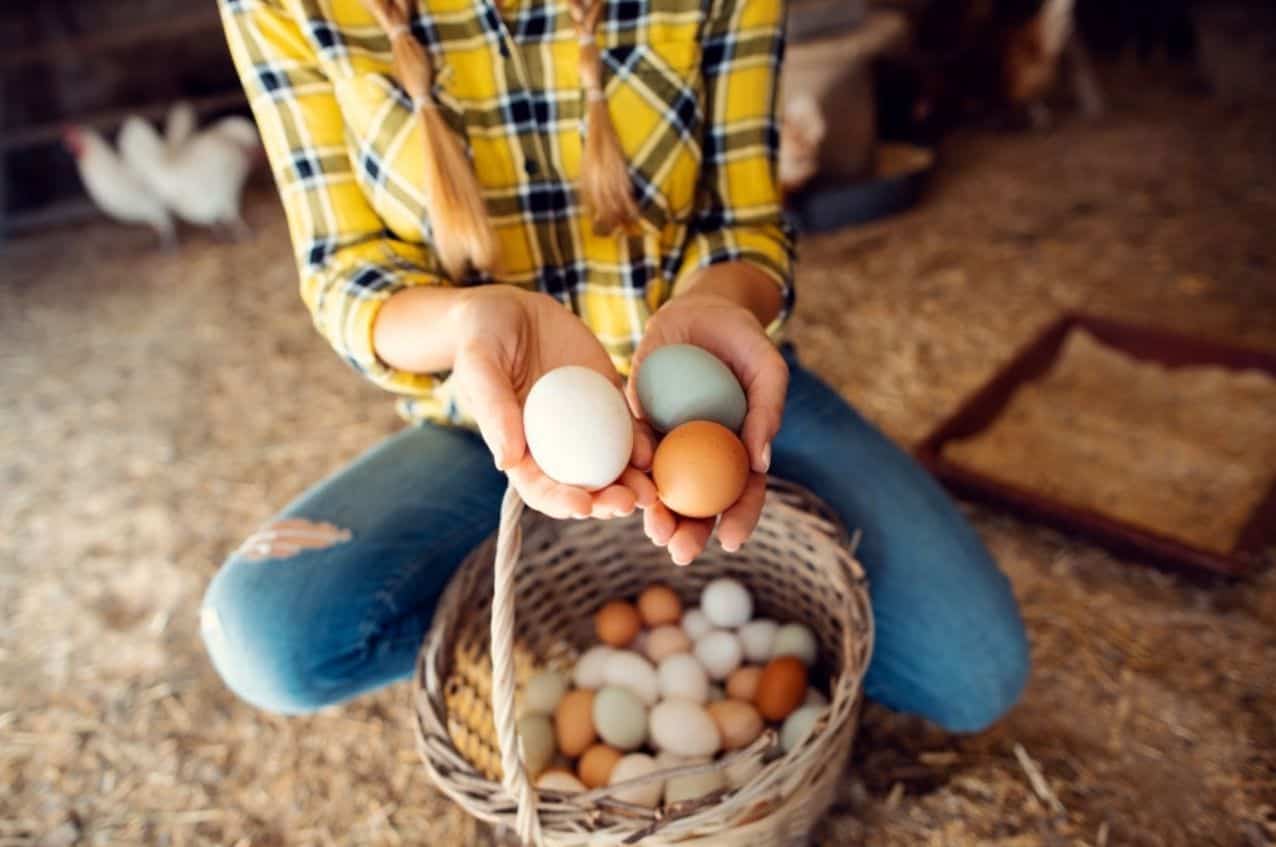Brown or white, a cholesterol bomb or a nutrient supplier – almost everyone has an opinion on the subject of eggs. It is popularly said that brown chickens lay brown eggs.
But what’s really true and why you should not eat eggs with silver spoons?
Here you can read why eggs can have different colors and what that means for consumers.
- Brief Anger Hampers Blood Vessel Function Leading to Increased Risk of Heart Disease and Stroke – New Study
- New Blood Test Pinpoints Future Stroke Risk – Study Identifies Inflammatory Molecules as Key Biomarker
- Enceladus: A Potential Haven for Extraterrestrial Life in its Hidden Ocean Depths
- New Experiment: Dark Matter Is Not As ‘DARK’ As All We Think
- Scientists in Fear of This New Predator From Red Sea Eating Native Species in Mediterranean
Why do hens lay white or brown eggs?
This is genetic. Eggs can be white, brown, greenish or reddish – depending on which color pigments are stored in the lime shell. These come from special glands in the chicken that are responsible for the shell formation. Red pigments come from the blood, yellow ones from the bile. If they mix, the result is brown.
Brown hens lay brown eggs? Is that correct?
No, there is no connection between plumage and egg color. In order to be able to infer the shell color from the appearance of the chickens, you have to take a closer look. On the flaps of skin under the ear, the ear discs. If these are white in purebred chickens, this is usually also their eggs. If they have red ear discs, the shell is usually brown.
Are brown eggs healthier – or more organic than white?
The variants do not differ in the composition of the nutrients. The fact that there are mainly brown organic eggs is mainly due to consumer habits: They still usually associate white shells with cage-keeping.
The poultry industry serves this assumption by mostly brown eggs being put on the market, whereas white eggs are more likely to be found in bakeries, large kitchens, and food companies.
Are eggs really “healthy and invigorating”?
For a long time, they had a bad rap: cholesterol, calories, dioxin – and then salmonella.
But they contain important vitamins, minerals, iodine, high-quality protein, and lecithin, which improve memory and strengthens nerves.
According to health experts, eggs should be prepared carefully to avoid spreading salmonella.
- Brief Anger Hampers Blood Vessel Function Leading to Increased Risk of Heart Disease and Stroke – New Study
- New Blood Test Pinpoints Future Stroke Risk – Study Identifies Inflammatory Molecules as Key Biomarker
- Enceladus: A Potential Haven for Extraterrestrial Life in its Hidden Ocean Depths
- New Experiment: Dark Matter Is Not As ‘DARK’ As All We Think
- Scientists in Fear of This New Predator From Red Sea Eating Native Species in Mediterranean
And according to registered dietitian Kristin Kirkpatrick, MS, RD, LD:
The current dietary guidelines don’t limit egg consumption as it did in the past.
Is protein made up of proteins?
Yes, but not exclusively. Because the thin egg white – colloquially also called protein – contains 90 percent water. The rest are vitamins, minerals and proteins, which are also often called proteins. However, the protein content in egg yolks is even higher than in egg white.
Eggs are a great source of protein.
Kirkpatrick says.
Are dark yellow yolks particularly nutritious?
The color of the yolk ranges from light yellow to deep orange, depending on how the hen is fed. That doesn’t change anything in terms of taste, freshness, nutritional value or quality.
For a dark egg yolk that is particularly valued by consumers, producers sometimes mix natural colorings – so-called carotenoids – into the green fodder.
Why does the yolk turn greenish to bluish when cooked for a long time?
The discoloration is the result of a chemical reaction. With prolonged high temperatures, iron-bound in the egg yolk dissolves and migrates towards the edge of the yolk. At the same time, sulfur is released in the egg white when it is boiled. This is how hydrogen sulfide is produced. This moves in the direction of the egg yolk and reacts with the iron to form iron sulfide at the boundary between the two egg components. The result is a green-blue edge of the egg yolk, which continues to grow into the yolk with the cooking time.
Why not eat eggs with silver spoons?
There is also a chemical reason for this: the hydrogen sulfide from the egg white reacts with the silver to form silver sulfide, which turns the spoon black. In addition, smelly sulfur is produced.
- Brief Anger Hampers Blood Vessel Function Leading to Increased Risk of Heart Disease and Stroke – New Study
- New Blood Test Pinpoints Future Stroke Risk – Study Identifies Inflammatory Molecules as Key Biomarker
- Enceladus: A Potential Haven for Extraterrestrial Life in its Hidden Ocean Depths
- New Experiment: Dark Matter Is Not As ‘DARK’ As All We Think
- Scientists in Fear of This New Predator From Red Sea Eating Native Species in Mediterranean
Image Credit: Getty
